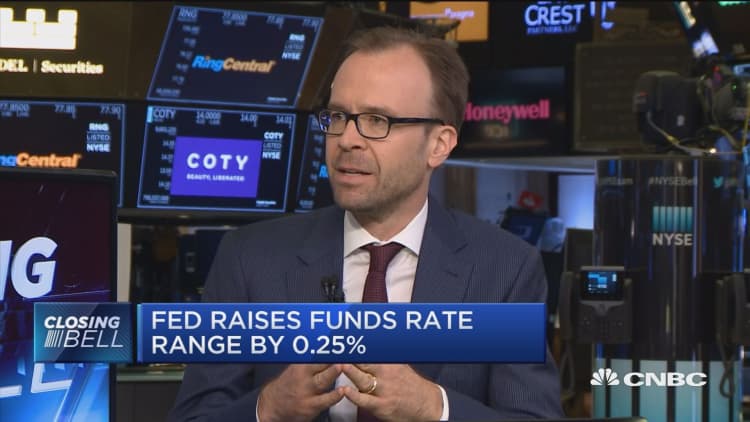
The Federal Reserve has been selling bonds it purchased to pull the economy out of the financial crisis. Now, it has begun preparing for what could be an early end to this program.
In turn, the move also could lead to fewer interest rate hikes than the central bank is currently forecasting.
At stake is the size of the Fed's balance sheet where it holds the Treasurys and mortgage-backed securities it bought during three rounds of stimulus that began in late-2008 and concluded in October 2016.
Where once Fed officials believed the balance sheet would shrink from about $4.5 trillion to a range of $2.5 trillion to $3 trillion, the required level may be considerably higher, depending on how much in reserves the banking system will need to remain liquid. Reducing the bond holdings results in a decrease in reserves.
No central bank in the world has ever attempted a balance sheet reduction on this scale, so the skill to which the Fed can pull it off is critical.
As the Fed has been continuing the program, financial markets have tightened and may require a quicker exit from the program than officials had figured. Markets had been anticipating that the program would run for several more years, but Wall Street pros are now considering a much sooner end.
"Our risk scenario to excess reserves ... suggests the balance sheet could be 'normalized' by summer next year," BNP Paribas said in a research note Wednesday. "The Fed is making and will likely need to make further changes as liquidity evolves to remain in control of money market rates."
In a move that it had telegraphed ahead of time, the Fed's policymaking Federal Open Market Committee on Wednesday raised the interest it pays on excess reserves by 20 basis points, or 0.2 percentage points. It did so at the same time it hiked the federal funds rate, which the FOMC uses as its benchmark, 25 basis points.
The interest rate on excess reserves, known as the IOER, is now 1.95 percent while the funds rate was set in a target of 1.75 percent to 2 percent. The Fed sets the IOER at the high end of the funds range to keep the benchmark rate in check, but the difference between the two has narrowed sharply in recent weeks. The Fed hopes that a lower increase in the IOER will hold back the funds rate.
What happens next is when things will get interesting.
Fed officials aren't sure why the funds rate had been rising to the top end of its range. While there's a belief that it is in large part due to increased issuance of short-term Treasury bills to pay for the increase in government spending, Fed Chairman Jerome Powell said Wednesday that uncertainty remains.
"This minor technical adjustment has no bearing on the appropriate path for the federal funds rate or financial conditions more generally," Powell said at a news conference following the FOMC meeting. However, he added that when it comes figuring out why the funds rate has been pushing to the top end of its range, he said, "The truth is we don't know with any precision."
The situation impacts interest rates in that tighter financial conditions could push the Fed to reconsider the pace of its policy normalization overall.
The Fed currently is holding about $1.9 trillion in excess reserves, a level that has come down more than $200 billion since the balance sheet runoff started in October. The Fed is allowing a set amount of proceeds from its bonds run off each month, until that level hits $50 billion in October 2018.
Markets will be watching closely to see how the relationship between the funds rate and IOER evolves.
Since the rate-hiking cycle began in December 2015, the Fed has been adept at keeping the funds rate at the midpoint of the target range.
However, despite the Fed on Wednesday telegraphing a fourth rate hike this year that would happen in December, one more than earlier forecasts, markets are expressing uncertainty. Traders are only assigning a 57.6 percent chance of an additional hike to close out the year, according the latest CME projections.


